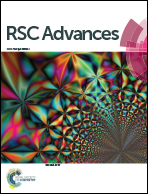An analysis of the tribological mechanism of GLC film in artificial seawater
Abstract
The tribological performances of the graphite-like carbon (GLC) films sliding against WC balls in distilled water (DW), artificial seawater (SW) and four types of saline solutions related to seawater were investigated. The GLC film was deposited by magnetron sputtering. The microstructure, mechanical properties and tribological performances of the GLC film were characterized by scanning electron microscopy (SEM), atomic force microscopy (AFM), Raman spectroscopy, nano-indentation and reciprocating ball-on-disk tribo-meter. The results showed that the smooth, dense and hard GLC film with significant sp2-hybridized carbon exhibited good tribological performance with low friction and wear not only in distilled water, but also in seawater. The tribological performance of the GLC film in seawater was closely related to the nature and constitution of seawater, as well as the nature and performance of the counterparts. Bulky wear debris with hard particles would generate a three-body wear regime, which increases the friction coefficient and wear rate of the GLC film slightly in seawater environment. In contrast, the divalent metal salts of seawater can decrease friction and wear between the two contact surfaces. The synergistic effect led to a relatively higher friction coefficient and wear rate of the GLC film against the WC counterpart in seawater than that in distilled water.


 Please wait while we load your content...
Please wait while we load your content...